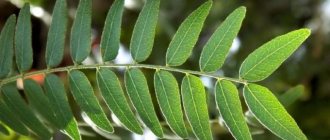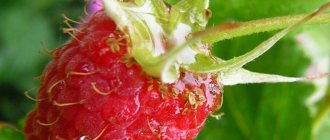Description
Evergreen, deciduous shrub forms and small trees represent the numerous genus Privet of the Olive family.
About 50 plant species occupy a fairly wide range: Europe, North Africa, Asia and Australia. Gardeners in Japan, China, and Taiwan have the opportunity to admire the greatest species diversity of ornamental plants. Privet or Ligustrum is popularly called “wolf berries.” Under natural conditions, some species are capable of reaching 5 m in height. Thanks to the rapid growth of plants, bending branches and the ability to form a crown, Privet has become quite popular in the culture for creating bonsai. Even a beginner can try his hand at practicing on any of the easy-to-care species.
The leaves of ornamental plants are oblong, leathery, mostly dark green in color. Only some representatives of the genus can boast of a yellowish-golden hue of foliage.
In addition to the spectacular crown, the attention of gardeners is attracted by the long flowering of many types of Privet. From June to the end of August, you can admire the snow-white paniculate or racemose inflorescences of small, fragrant corollas. Blue-black spherical fruits adorn the branches with the arrival of the first month of autumn. In all species, drupes are poisonous.
Representatives of the genus Ligustrum are successfully cultivated as garden, undemanding plants. Only some species cannot tolerate sub-zero temperatures and require winter shelter in the open ground. Privet is used as a highly decorative “hedge” of winter-hardy representatives, as well as for border and group plantings.
By being able to provide the plant with a cool place to grow indoors, you can easily form a spectacular tree in any of the popular bonsai styles. Ligustrum is little affected by pests and practically does not get sick if suitable conditions are provided for its maintenance.
Peculiarities
The height of the bush reaches 200 centimeters, and its width is about 100 centimeters. Privet is also found in the form of small trees that have a spreading crown and a height of about 6 meters. The leathery, entire leaf blades have an elongated ovoid shape; they are oppositely located. Their front side is painted dark green, and the back side is pale green. The white, fragrant small flowers are almost sessile. They are collected in apical loose inflorescences that have a paniculate shape. Their length varies from 6 to 18 centimeters. Flowering duration is 3 months, and it begins in June or July. The fruits are berry-like small drupes of round shape, which are colored black or dark blue. Each fruit contains from 1 to 4 seeds. Privet is a fast-growing plant. In the middle zone, common privet is most often cultivated, because this species is the most winter-hardy. Below we will describe how to plant, care for and propagate this particular type of privet. Most often, this shrub is used to form a hedge, but it is also grown as a single plant and in small groups. Privet bonsai are becoming increasingly popular.
Planting privet
Growing
Privet can be propagated by cuttings, seeds and root layering. Cutting semi-lignified cuttings (10–14 cm in length) from last year's shoots is carried out in the fall. They take root well in a substrate of peat and sand in equal proportions. Cool temperature conditions and placing cuttings under glass promote rapid root formation, and in the spring young plants are transplanted into a nutritious, light substrate.
Ligustrum propagation by seeds is a less common and time-consuming method, but is practiced among flora lovers. Ripe berries should be given time to rot, then mixed with soil and left until the fall of next year. After the first year of life, the seedlings can be planted. And only after two years, it is recommended to form bonsai from plants grown from seeds.
Privet is unpretentious in care, grows and branches quickly. In early spring, a shrub or tree needs sanitary pruning, during which it is necessary to remove weak branches. In order to give density to the crown, the tops of young shoots are pinched several times during the period of active growth, since the representative of the genus lends itself well to shearing. The interior of the room will be perfectly complemented by the original crown of a bonsai tree in the form of a ball, pyramid or any other intricate figure.
Privet is undemanding to soil. A universal substrate for flowering plants is best suited for replanting. Every two years, it is recommended to update most of the soil in the container, since the root system reacts very poorly to transplantation into new soil.
The application of mineral fertilizers for bonsai must be carried out during the period of active growth (April-September) twice a month. In winter, it is recommended to reduce the frequency of fertilizing to once a month.
Privet propagation
Privet can be propagated using seeds, layering, cuttings, shoots or root suckers.
Growing privet from seeds
Growing privet from seeds is a very long and labor-intensive process. Moreover, the germination rate of seeds is low (about 65 percent). Privet begins to produce fruits only after it turns 6 years old. Thus, this plant is grown only in industrial conditions; therefore, it is better not to collect seeds in the autumn, because there are ways that make it much easier and faster to propagate privet.
If you nevertheless decide to grow this shrub from seeds, then they need to be selected from ripe fruits, and the largest ones should be left. They are then placed in a container filled with water. After some time, some of the seeds will remain on the surface of the liquid; they can be collected and thrown away. The other part of the seeds will drown; they need to be subjected to further stratification. To do this, they are sown in open soil in October; in winter they will undergo natural stratification. The first seedlings can be seen after 1 year. However, if you decide to sow in the spring, then the seeds should be poured into a box filled with sand and peat and kept in a place where the temperature is almost 0 degrees until spring.
Propagation of privet by cuttings
It is better to choose summer cuttings, since their rooting percentage is 90–100%. Cutting should be done when flowering is almost over, and the most mature and developed shoots are selected. The cuttings should reach 10–12 centimeters in length. The cuttings are planted in turf soil, the surface of which must be covered with a layer of washed coarse sand. They are planted at an angle of 45 degrees, while burying them 5 centimeters into the substrate. Cuttings root most quickly at a temperature of 20 to 25 degrees, while constant humidity is needed. To provide the cuttings with optimal conditions, each of them should be placed on a one and a half liter plastic bottle, the neck of which should be cut off, and several holes should be made in the bottom. The first roots will grow within half a month, and after 3 months the plants will already have a well-developed root system. After complete rooting, the cuttings will need to be grown for about a year, and if necessary, they are transplanted into larger containers. Planting in open soil can be done only after the height of the cuttings is 50–60 centimeters.
Reproduction of privet by layering
In spring, you will need to choose a strong branch growing close to the ground. It should be tilted towards the surface of the soil and fixed in this position, having previously made a not very large shallow cut on the lower surface of the part of the branch that will be immersed in the soil. Then the part of the branch bent to the ground must be covered with soil, on top of which sphagnum is laid. It is important to ensure that the moss is moistened at all times. At the same time, remember that there is no need to dig in the top part of the branch. If the cuttings take root successfully, they will begin to grow. It will be necessary to separate the cuttings and plant them in a permanent place only after next spring arrives.
Layers can also be obtained without digging. To do this, take a sewing needle and use it to make several scratches on the surface of the twig. Then you need to pour the moistened soil into a polyethylene bag. After this, it must be fixed on the branch so that part of the twig with scratches ends up in the soil. Then seal the bag tightly using tape. This method allows you to get several layerings from one bush at once. After the bag is filled with roots, the cuttings must be carefully sawed off. Then carefully remove the bag and plant the cuttings in open soil.
First steps after purchase
Ligustrum is often offered for sale as a young bush or already formed bonsai tree. A thorough examination of the above-ground parts of the plant will allow you to purchase a healthy, young specimen full of vigor.
To prevent the appearance of insect pests and common diseases, it is recommended to create conditions with high air humidity from the first days of Privet living indoors. Frequent spraying with water at room temperature, especially on hot summer days, will only benefit Ligustrum. In diffused light or partial shade, a representative of the genus will feel excellent. When choosing a location, it is also recommended to avoid drafts and sudden temperature changes.
Main types and varieties with photos and names
Below are the types and varieties that are most popular among gardeners.
Common privet (Ligustrum vulgare)
Under natural conditions, this species can be found in the southwestern and southern regions of Ukraine, the Caucasus, the northern part of Moldova and Africa, Central and Southern Europe and Asia Minor. At the same time, such shrubs prefer to grow in oak undergrowth. This deciduous branched shrub grows well in the shade, and it can reach a height of about 5 meters. The leathery plates are oblong-ovate or lanceolate, their underside is light green, and the front is dark green. White fragrant small flowers are part of erect panicles, the length of which can reach 6 centimeters. Flowering can begin from June to mid-July, and its duration is 20 days. The black fruits do not fall until January. This species is the most winter-hardy; therefore, it is widely cultivated in the middle zone. In addition to the original species, 10 more of its decorative forms are cultivated: pyramidal, weeping, evergreen, gray, gray-white-edged, golden, yellowish, golden-variegated, silver-variegated, barren and yellow-fruited.
The most popular varieties are:
- Aureum . This semi-evergreen plant reaches a height of about 100 centimeters. This slow-growing, non-flowering plant has golden leaves. If the winter is not frosty, then some of the leaves remain on the bush until spring.
- Vicar . This semi-evergreen plant can reach a height of 100 centimeters. It has a dense crown consisting of wide oval leaves of a yellow-golden color, and in the fall they turn bronze-violet. Their length does not exceed 6 centimeters. Flowering occurs in mid-summer. The flowers are small, white, fragrant. The shrub must be covered for wintering.
- Aureo-variegatum . The height of this non-flowering plant is about 1 meter. It has variegated golden plates. The crown diameter is about 1.2 meters.
Shiny privet (Ligustrum lucidum)
Under natural conditions it is found in China, Japan and Korea. It is a large evergreen shrub or compact tree. The dark green leaf blades have an elongated ovoid shape, their front side is glossy, and their length reaches 15 centimeters. The fragrant paniculate inflorescences are about 18 centimeters long and consist of small white flowers. Flowering lasts 3 months. This species can withstand temperatures as low as minus 15 degrees; therefore, in order to survive the winter, it requires shelter. Decorative forms: golden-edged, golden-variegated, tricolor.
Japanese privet (Ligustrum japonicum)
In natural conditions it can be found in Japan and South Korea. This species has many similarities with shiny privet, and therefore they are often confused. This evergreen plant does not exceed 400 centimeters in height, has a compact crown and small leathery dark green leaf plates. The inflorescences of this species are shorter in length compared to shiny privet, the flowering period is shorter, and this plant does not grow as quickly. However, this species is more resistant to frost and shade-loving. There are 2 decorative varieties: variegated and round-leaved.
Oval-leaved privet (Ligustrum ovalifolium)
The height of the bush is no more than 100 centimeters, and all because while growing in the middle zone it freezes all the time in winter. In spring, the bush recovers. Flowering is irregular. The aroma of narrow flowers is not very pleasant.
Decorative forms:
- Variegatum (variegated). In areas with mild winters, such an evergreen shrub can reach several meters in height. Green leaf blades have a white-cream border.
- Argentum (Silver). The medium-sized bushes have leaves with cream edges.
- Aureum (Golden). The leaf blades have a yellow-golden edge. In the southern regions it is grown without shelter and is often used as a container crop.
Privet Ibota (Ligustrum ibota)
Under natural conditions it is found in Korea, China and Japan. This deciduous shrub can reach 200 centimeters in height. The crown is spreading. The glossy leaf plates are elongated ovoid in shape on the front side and painted dark green on the reverse side, and bluish on the reverse side. Irregular flowering is observed in summer. The length of the fragrant white inflorescences is about 7 centimeters. This species loves warmth and reacts negatively to sudden temperature changes. It must be covered for the winter.
Privet (Ligustrum yezoense)
It is a winter-hardy species, like common privet. His homeland is Sakhalin. The shade-loving shrub reaches 150 centimeters in height. It has small wide leaf blades.
Privet (Ligustrum acutissumum)
Originally from the mountain slopes of Southern China. The height of the bush is about 300 centimeters. Flowering is abundant, lasts for half a month, and begins in the first days of July. The fruits fully ripen in October. Not winter-hardy.
Privet (Ligustrum compactum)
This semi-evergreen shrub does not bloom. In natural conditions it reaches a height of 400 centimeters, and in culture - 200 centimeters. The crown has a diameter of about 1.8 meters. Large leaf blades remain on the branches until the next growing season. Winter hardiness is low.
Quihoun Privet (Ligustrum quihoui)
It is found naturally in the provinces of China: Sichuan, Shanxi, Yunnan. The height of such a semi-evergreen shrub is about 200 centimeters. The leaf blades are small and tough. The length of the flower panicles consisting of small flowers is about 20 centimeters. Flowering begins at the end of summer. The species is characterized by pubescence on the underside of the leaf blades and young shoots. Varieties:
- Variegatum . The leaves have a white edge.
- Vicar . Light yellow leaf blades turn bronze after frost.
Secrets of success
By placing the plant away from direct sunlight, on the east, west or north side, you need to take care of the temperature conditions in the room for successful cultivation of Privet. In summer, it is advisable to place the tree on the balcony or in the garden, shading it from the burning sun: the plant is not afraid of heat and prefers fresh air. In the autumn-winter period, it is recommended to additionally illuminate the plant and keep it in a cool room, with a thermometer reading of +11–14°C. Higher temperatures lead to leaves curling and falling, which negatively affects the condition of the decorative bonsai crown.
Ligustrum prefers sufficiently moist soil, but stagnation of moisture in the container, especially in winter, leads to rotting of the roots. The plant should be watered with settled water at room temperature as the top layer of soil dries.
Planting privet
What time to plant
Since this shrub in natural conditions prefers to grow in the undergrowth, it can be grown in a shaded place in the garden. This plant is also drought- and gas-resistant, and it does not require any special soil. However, growing privet in dry, acidic sandy soils is not recommended. But if you want your shrub to be as decorative as possible, then it will need to be provided with the most favorable conditions. So, it is recommended to plant it in a well-lit place, and it is necessary to retreat no less than 0.7–1 meter from buildings or trees. The soil should be well-drained, moderately moist, and rich in nutrients. It should also be slightly alkaline or neutral. The soil should consist of humus, turf and sand (2:3:1). Such a plant can be replanted throughout the growing season. However, it is best to carry out this procedure in the spring, and it must be done before the buds open. But some gardeners believe that it is better to carry out this procedure in September or October.
How to plant privet
Before planting privet, you need to dig up the area. Then you need to make a hole for planting, the width of which will be 65 centimeters. The depth of such a hole should be 30 centimeters greater than the size of the shrub root system. Then you need to pour water into the hole and wait until it is completely absorbed into the soil. Crushed stone should be poured onto the bottom of the hole, and the layer thickness should be 10–20 centimeters. In a not very large amount of soil mixture (the composition is described above), you need to add 130 grams of nitroammophoska. Then it is poured into the planting hole in a mound on which the seedling is placed. Its roots are straightened, and the hole is filled with earth mixture (without fertilizer). For 4 weeks, you need to ensure that the tree trunk does not dry out. Then its surface will need to be sprinkled with a layer of mulch (peat), the thickness of which should be 5–8 centimeters.
If this shrub is planted to create a hedge, then a trench is made for this, the depth of which should be 60 centimeters and the width - 50 centimeters. When planting, a distance of 30–40 centimeters must be maintained between plants. It needs to be planted in the same way as for a single planting. The trench must be filled with earth mixture, which must be compacted. Then the plants need to be well watered at the roots.











